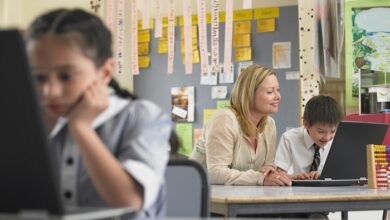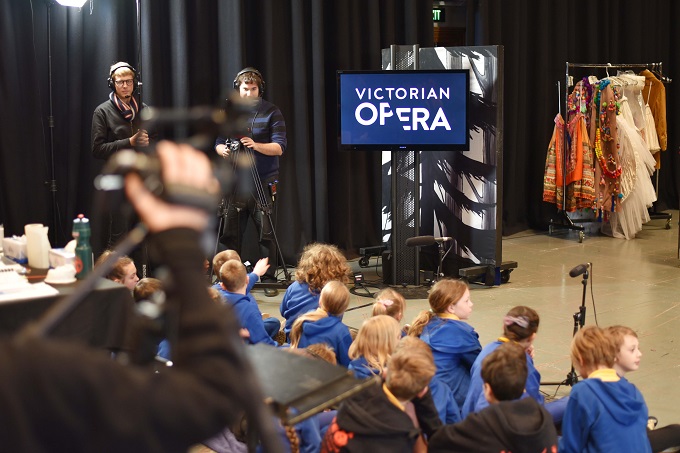Bringing Maths to Life: Addressing the School Maths Crisis
A recent conference at UNSW brought together leading Australian mathematics practitioners and educators in pursuit of an answer to the question: how can maths learning be lifted?

Opened by ‘Australia’s favourite maths teacher’ Eddie Woo, the conference brought together almost 250 educators from across New South Wales. All sectors were represented, both amongst delegates and presenters, in discussions on how to transform mathematics education in Australia.
“Raising the performance of Australian students requires lifting the performance of low attainers without negatively impacting the performance of those currently doing well,” said Kim Beswick, Professor of Mathematics Education at UNSW, who delivered the keynote address. “Low attainers can be taught to adopt the work habits of high attainers and can learn from interacting with high attainers.”
A key message from the conference relates to the beliefs – unconscious or otherwise – of the teachers in charge of transmitting maths knowledge to students, as well as teachers having a broad knowledge of the full curriculum. Knowledge of only elements of the curriculum and focussing on skills alone is insufficient when attempting to transmit the complexity and substance of mathematics.
“Meaningful change to school structures and pedagogies for low attainers are dependent upon teachers’ beliefs about what maths is (it is not as linear and hierarchical as many believe), what it means to learn and do maths, and the capability of students (that low attainers can improve their ability to learn maths),” Professor Kim Beswick stated.
Dr Christine Mae, Maths and Numeracy Specialist K-12 Sydney Catholic Schools sees the outlook and attitude of the teacher as essential: “Knowledge is not enough. Together, schools and universities need to shift experiences of, and dispositions towards, mathematics.” She explains that it is essential that students are taught to understand concepts, and not just master skills. “Teachers need to be confident in knowing mathematics, as well as how to teach it, in order to respond flexibly to stretch students forward from any starting point.
Let’s make sure that students don’t miss the Mathematics because they are too busy completing tasks. Dr Christine Mae
Dianne Siemon, Emeritus Professor Mathematics Education at RMIT University also reminded delegates that the broad understanding and competencies will be lost if students are taught only to drill down on specific tasks: “We do not need to differentiate everything, nor do we need to endlessly focus on skills at the expense of problem solving and mathematical reasoning.”
One factor that has contributed to the decline in mathematics performance over recent years is the number of people teaching maths out-of-field. This is a sector-wide issue caused by the teacher shortage previously reported upon by School News.
As Professor Beswick states: “Transforming mathematics teaching practice is affected by teachers’ experiences, knowledge, confidence and opportunity. Professional learning alone is insufficient. To be successful teachers need to know the whole of the mathematics curriculum and not just the part they teach and they need in situ professional learning to practise and apply principles of practice into their classroom contexts.”
Delegates at the conference were able to hear about the creative approach to lifting mathematics performance being taken at some standout NSW schools. The approaches to Mathematics at Mary McKillop Catholic College Wakeley, Marist Sisters’ College Woolwich and St Anthony’s Clovelly have in common an emphasis on teaching for understanding first, through rich problems and tasks that stimulate students’ communication, reasoning and critical thinking.
Professor Beswick explains: “Teachers in these schools are crafting a careful balance between teaching for understanding and providing opportunities for students to practise, master, automate and apply the mathematical techniques that relate to the concepts being learned in order to truly transform understanding into knowledge. While the approaches are innovative in that they are not the norm, they are based on the recommendations of research, including those from the TIMSS and PISA: students need more opportunities to engage in more complex tasks and higher expectations for communicating their thinking and reasoning.”
One way the learning gap can be bridged is with partnerships between schools and universities, ensuring that the teachers are adequately trained and prepared.
“Partnerships… [enable] practicing teachers to engage in teaching method courses that intertwine knowledge of mathematics as a continuum in relation to the syllabus (horizon knowledge) with time to engage with mathematics, including the solving of more complex, unfamiliar, non-routine problems,” explains Christine Mae. “Learning environments in school and university settings need to reflect collaborative, inclusive cultures that recognise the importance of productive mathematical discussion of ideas and strategies. Together, we need to move beyond doing and talking about research to acting upon it to transform mathematics education in Australia.”
The ‘house full’ conference demonstrated there is strong commitment among teachers to high quality professional learning in Mathematics and the presentations were received with great interest and enthusiasm.
Materials from the conference are now available at the NSWIER website here: https://www.nswier.org/2022-maths-teaching-conference.html







